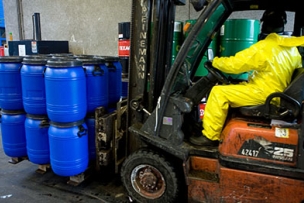Fluke Corporation is the world leader in the manufacture, distribution and service of electronic test tools and software. Founded in 1948, Fluke products empower the manufacturing and service industries with critical testing and troubleshooting capabilities. Fluke has been a trusted test tool partner, helping you and your team work safely with tools that meet or exceed the safety standards of the demanding environments you work in. Get the solutions you need to keep your world up and running with Fluke tools from MSC.
How airborne particle counters provide vital information for IAQ in healthcare facilities
In the highly sensitive environment of a healthcare facility, where both infection patients and those highly susceptible to infection receive treatment, it is essential to minimize the possibility of infection and disease transmission.
One potential vector of infection that must be managed is the air circulating within the building. Failure to correctly monitor and manage indoor air quality can add cost due to increased lengths of stay, expose the institution to liability, and more importantly, expose patients and staff to unnecessary risk.
In an effective indoor air quality (IAQ) program, an important tool is one that can identify airborne particles, such as the Fluke 985 Air Particle Counter. Used in conjunction with pressure and airflow testers, particle traps and laboratory analysis, the particle counter can provide facilities managers with the data they need to detect IAQ problems, identify and address root causes, and verify when conditions have returned to acceptable levels.
Specifically, a particle counter enables the healthcare facility manager to:
- Document baseline particle counts within a specific space
- Detect when airborne particulate levels diverge from baseline or “normal” levels
- Gain early warning of underlying issues, such as changes in operating procedures, equipment malfunctions, maintenance shortcomings, or failure to separate construction zones from patient areas
- Test particle levels after changes have been made to ensure that remedies have been effective
Sources of IAQ problems in healthcare facilities
The spread of infection through the indoor air is a serious potential problem in healthcare facilities. Such infections can stem from two sources:
- Infectious agents produced by people inside the facility, such as tuberculosis, rubella (measles), and influenza.
- Agents normally present in the human environment that can endanger patients who have compromised immune systems. Such organisms include aspergillus fumigatus, a common species of mold, and others.
Other airborne particulates, such as inorganic materials and allergens, while capable of causing health problems, pose a lesser threat to patients. These contaminants will not be addressed in this article, although the air filtration and air pressure balancing techniques that help control biological pathogens can also control odors, dust, and other non-viable air pollutants.
To control the movement and spread of infectious agents, facility designers and managers establish special purpose spaces called Airborne Infection Isolation (AII) or patient isolation rooms, and Protective Environment (PE) facilities. In both special ventilation spaces, air pressures are regulated to move air from clean to dirty areas.
The AII room would house a patient judged to be a source of airborne infection, such as mycobacterium tuberculosis or measles virus. Vents draw air from the room and exhaust it outside the building. High efficiency particulate air (HEPA) filters may be used to help remove particles from the air. Makeup air flowing into the room is balanced so that the room remains under negative pressure. Thus, the direction of airflow under the door or when the door is opened is into the space, rather than out, helping contain infectious particles.
The PE facility is designed to keep infectious agents out and protect immuno-suppressed patients and others, such as bone-marrow and organ-transplant patients and premature infants, who are especially vulnerable to opportunistic infectious agents. The CDC recommends that PE facilities be maintained under positive air pressure, with directional airflow (from one side of the room, across the patient to the exhaust) and 12 or more air changes per hour. Clean air is supplied through HEPA filters, and point-of-use HEPA filters may also be used. Air flowing through an open door or leak moves out of the space, not in.
Examples of healthcare facility IAQ problems
AII and PE facilities provide a framework for limiting the spread of infectious agents, but they are not foolproof. Building design, inconsistent or inadequate operating procedures, poor maintenance, and facilities construction and renovation projects all have the potential to cause problems. And in any case, protective facilities are not used for all patients.
Even the best air filtration and airflow design can be defeated by inadequate maintenance or incorrect operation. A slipping fan belt on a ventilation supply fan, for instance, could alter the air balance in a protective environment facility, allowing particle-laden air from the hallway outside to flow in. Failure to correctly seal off and ventilate a construction area can send a cloud of construction dust and aspergillus spores into areas where patients are housed. Failure to fix a leaking sink can turn the cabinet below into a nursery for potentially hazardous mold.





Talk to Us!
Leave a reply
Your email address will not be published. Required fields are marked *